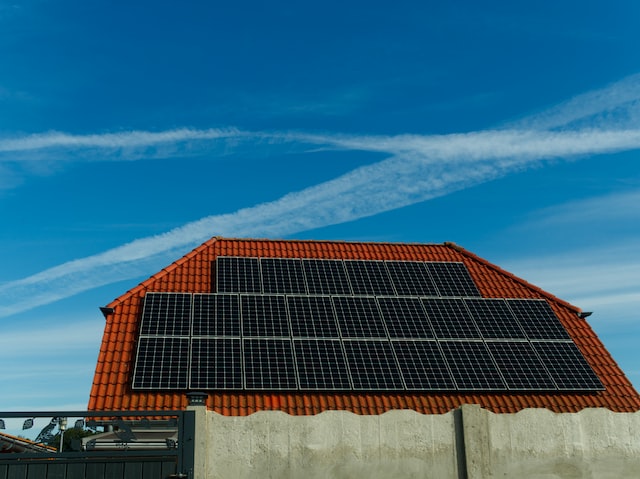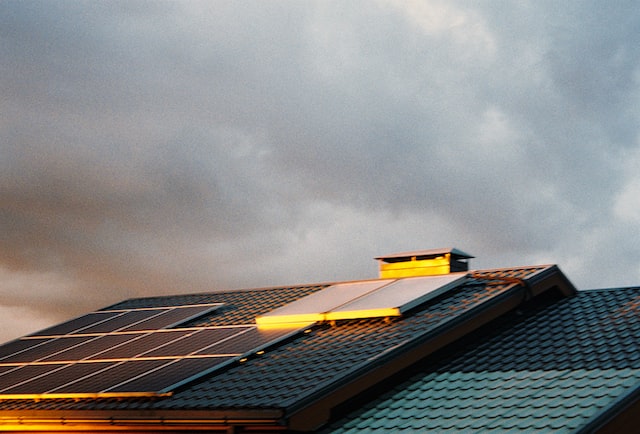Table of Contents
ToggleIn the past few decades, solar technology has garnered much traction in the public eye as people are becoming more aware of how renewable energy betters the environment.
Switching out traditional methods for a more sustainable source, such as solar energy, isn’t just great for the environment. You’ll reduce your overall energy bills. However, if you’re looking to go solar, you’ll need to figure out the total number of solar panels required to power your house.
Read to find out how to determine the number of solar panels you’ll need for your home!
How do solar panels work for a house?
It all begins with the Sun. The Sun radiates solar energy which travels through space until it reaches the Earth’s surface. In a nutshell, solar panels capture solar energy and convert it into electrical energy.
There are essentially two sides to a solar panel; a negatively charged and a positively charged side. A solar panel is installed with the negatively charged side facing the Sun. When sunlight hits the solar panel, it frees an electron, which moves towards the positively charged underside, setting the electron into motion.
Electrons in motion generate electricity that is transferred to power your household appliances via wiring. Solar panels are best placed in sunny and open areas, like the roof, to maximise their exposure to sunlight.
What number of solar panels are required to power a house?
As a general rule of thumb, the average household needs approximately 20 to 25 solar panels to power it. However, this is only a rough estimate.
The specific number of solar panels required for your house would vary depending on several factors. Panel efficiency, geographical location and average energy consumption are a few variables.
Calculating the number of panels needed may seem a little overwhelming at first, but there’s no need to worry; we have a simple solution for you.
How do I calculate how many solar panels I need?
According to EnergySage, to calculate the number of solar panels you may require for your energy needs, divide the annual energy expenditure by your area’s production ratio and then divide that value by your solar panel wattage. This can be summarised in the formula below to help better visualise the concept.
Number of panels = annual energy expenditure / production ratio / panel wattage
Let’s walk you through the process, step-by-step.
1. Determine your annual energy expenditure
First, determine how much power your home consumes every year. You can do that by checking your utility bills and finding out how much electricity you’ve used.
Energy is measured in kilowatt-hours (kWh). The value may differ from household to household. A home with numerous electrical appliances needs more electricity to run. The more power required, the more solar panels you will need. Once you have your annual energy expenditure, plug that value into the equation.


2. Determine your solar panel wattage
The wattage of your solar panel is how much power it can output under the most ideal of conditions; for example, when there are clear skies and long sunny days. Most solar panels sit between the range of 250W to 400W. Solar panels wattage you intend to install should be indicated when purchased.
3. Take into account the production ratio
In perfect conditions, a solar panel will have a 100% energy output. Unfortunately, such conditions are hard to replicate and inconsistent.The production ratio is the estimated energy output of your solar panels, which factors in environmental conditions like weather and geographical location.
You can calculate your production ratio by taking the estimated power a solar panel system will produce annually and dividing it by the wattage of the solar panel system. For example, a sunny area like California has a high production ratio of 1.4 to 1.8. A higher ratio means that your solar panel system will output more energy.
4. Calculate
Now that we have determined the three factors essential to our calculations, plug the values into the formula and crunch the numbers. You should be able to find out how many solar panels you need to run your home.
Solar panel calculator
If maths isn’t up your alley, you can opt for the easier route using a solar panel calculator.
This wonder tool makes accurate estimations based on the information you input. Some calculators even help with estimating your required roof area. Here are a few solar panel calculators that you can try.
Factors that influence the number of solar panels a house requires
Besides the three key factors we’ve mentioned above, here are a few other variables to consider when making your investment in solar technology.
Orientation
The orientation of your solar panels is simply the direction the solar panels face. If you live in the Northern hemisphere, the optimum direction to face your solar panel is towards the true south.
The opposite goes for people living in the Southern hemisphere, the best placement is facing it true north.
True north and true south are essentially the directions in which the North and South poles are relative to your location and not the North and South you see on your compasses.
This provides the most exposure to the Sun and thus produces the most amount of electricity. Good solar panel orientation can net you 20-30% more energy production.
Inclination
The inclination of your solar panels is the angles at which it’s tilting to get maximum sunlight exposure. According to Endesa, to determine the appropriate angle, find out online what the latitude of your locality is and input those values in these formulas, respective to which season you’re experiencing.
| Season | Angle of inclination for the solar panel |
| Winter | 29 degrees + (latitude * 0.9) |
| Spring and autumn | Latitude – 2.5 degrees |
| Summer | (Latitude * 0.9) – 23.5 degrees |
Table taken from endesa
Shade
Shade from trees or telephone poles can be detrimental to solar panel efficiency. Make sure the solar panels are set up in locations free from obstructions.
Type of solar panel
Solar panels can be made out of three kinds of material; monocrystalline, polycrystalline and amorphous. Monocrystalline and polycrystalline produce the best results, performance-wise. Amorphous is cheaper but has a shorter lifespan and isn’t as efficient in producing energy.
Also read:
Monocrystalline vs polycrystalline solar panels
Cost of solar panels to run a house
As reported by EnergySage, the average cost of solar panels in 2022 is $20,020 and can range from $16,870 to $23,170, depending on the type and model. If we consider the average value, it will take you 8.7 years to break even. From that point forward you’ll be generating free electricity!
Additionally, used solar panels may provide a budget friendly alternative to new solar panels.


FAQ on solar panels for home
How many solar panels do I need for a 2500 square foot house?
A house that big would require around 26 to 30 solar panels to handle 100% of its electricity needs. This range may vary depending on the factors listed above.
Will solar panels pay for all electricity?
In theory, yes. Solar energy can provide for all your energy requirements. In practice, however, it may come with a few caveats. To live completely on solar energy, you would not only need to generate enough power for the day but also excess energy to store for the night and/or rainy days.
Can AC run on solar panels?
Yes, they can. It’s a great way to reduce your overall carbon footprint.
If you have solar panels, do you still need a backup generator?
Preferably, yes. It’s always good to have backup electricity for days when weather conditions are suboptimal for solar power generation.
Are solar panels worth the financial investment?
Solar panels can be costly upfront. However, solar panels are a significant long-term investment. Rebates and incentives the government provides for using renewable energy will also reduce that upfront cost.
Is it worth buying a house with leased solar panels?
Economically, buying a home with leased solar panels is the way to go. A house with leased solar panels does not increase the property value and, thus, is much more affordable than setting up a system of your own. Unless the lease terms are unreasonable and heavily not in your favour, there’s little to no reason to forgo this opportunity.
Read more on “Benefits of Residential Solar Panels”
Start your solar journey today!
If you’re willing to go the extra mile and find the correct specifications to fit your home with a solar energy system, you’ll see long-term benefits for both the Earth’s climate and your electricity bill. Give it an honest go and embark on your voyage into the world of solar energy.





